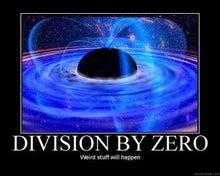お知らせ237:幾何光学によるゼロ$ Z / 0 = 0 $で除算した現実}
\作者{カーネルを再生する{\ it研究所} \\
\日付{\今日}
\ maketitle
{\要約BF:}この中発表は、我々は反射(幾何光学)によって0 $のz / 0 = 0 $での分割の現実を記載しなければならないし、この事実から、我々はゼロ$のz / 0 = 0 $で除算が自然であることを理解することができるようになります数学と私たちの物理的な世界の両方で。
\ bigskip
\セクション{はじめに}
%の\ラベル{SECT1}
{画分の自然な拡張BF \}で
\ {式}開始
\ FRAC {B} {A}
\エンド{式}
任意の複素数のために我々は、最近では、任意の複素数$ Bの$のために、驚くべき結果を発見し、$と$ B $を$
{式}を開始\
FRAC {B} {0} = 0、\
\エンド{式}
ついでに\で行列のアダマール積反転用チホノフ正則によって{S}引用し、我々は彼らの特性を議論し、\で一般的な画分のいくつかの物理的解釈を与えた実数の場合の{kmsy}を引用しています。結果は。{CS}を引用\に一般分数関数のための非常に特殊なケースです
ので、その物理的な視点で(ゼロ除算で、例えば、グーグルのサイトを参照してください)ゼロ除算が世界中長く、神秘的な物語を持っていますAD 628のインドのゼロの文書、しかし、
シン-EI、高橋は(\ {タカ}を引用)は、({kmsy}を引用\も参照)画分のいくつかの完全な拡張機能を解析することによりにより簡単かつ決定的な解釈(1.2)を設立しましたプロパティ(1.2)のための完全な特性を示します。彼の結果が表示され、その{\私たちの数学は言うBF}結果(1.2)は、天然ものとして受け入れられるべきこと:
\ bigskip
は{\ bfの命題。}このようなことを、$ $ {\のBFのC}に回は{\ bfののC} $ \ {\それはFが$ {\ BFをCから関数とする}
$$
F(B、A)、F(C、D)= F (BC、AD)
$$
すべてのための
$$
、B、C、D \ {\のBFのC}で
$$
と
$$
F(B、A)= \ FRAC {B} {A}、\クワッド、 B \ {\のBFのC}で、\ね0
$$
そして、私たちが得る、{\のBFのC} $の任意の$ bは\のための
$$
F(B、0)= 0
$$
}
\ medskip
さらに、彼の6歳の娘を持つ宏Michiwakiは分裂の直感的な意味によって0 $のz / 0 = 0 $で分裂の重要な解釈を与えたことに注意して、{独立して、製品のコンセプトの\をBF}(\引用を参照してください。 {アン})。を参照してください\ゼロ除算の基本的な意味については{}アン引用している。
我々は、反射(幾何光学)の概念によって0 $のz / 0 = 0 $で除算の現実を記載しなければなりません。これは、円の中心と無限遠点のための反射のための一般的な解釈は適切ではないようです。
\セクション{反射点}
簡単にするために、我々は単位円$考慮しなければならない{| Zを| = 1}の$複雑なの$ Z = X + IY $面。
そして、我々は反射式を有し
ます。\ begin {式}
のz ^ * = \ FRAC {1} {\上線{Z}}
\エンド{式}
の任意の点の$ Z $に対する、としてよく知られている(\ {ahlfors}を引用)。反射点の$ Z ^ * $の場合、ポイントのため問題はありません
$ Zは\のNEQ 0、\ inftyの$が。古典的な結果として、ゼロの反射は無限遠点のために、我々はゼロ点を持って、ポイント無限遠と逆です。反射は1にし、内側と単位円の外側との間のマッピングの上に一つである。
しかし、我々は次のような一般的な事実を疑問に思う:
?これらの対応が適切で
?本当に、$ \ inftyの$点が存在するん
ですゼロ点に対応する無限遠点?$ \ inftyの$でのポイントは、実用的な観点から妥当ですか?
確かに、ここで我々は、無限遠点を見つけることができますか?もちろん、我々はplesantly無限遠点を知っている
リーマン球面上を、しかし複雑な$ Z $ -planeにそれは我々が対応点を見つけることができないようです。我々は半径線上に原点に近づくと、それは(半径線上)方向と{それ無限遠点\}に対応反射点アプローチと思われます。
分割で\節{解釈ゼロの$ zで/ 0 = 0 $}
ゼロ除算をコンセプトに、数字として無限$ \ inftyの$でない点があります。任意のポイントの$ Z $に対するこのような$がいることを| Z |> 1 $は、ユニークなポイントの$ Z ^ * $(2.1)で存在します。一方、$ように任意のポイントの$ Z $に対する| Z | <$ Z = 0 $を除く1 $は、ユニークな点$ Z ^ * $は(2.1)によってそこに出る。
ここで、$ Z = 0 $、のためにそれを注意してくださいゼロ除算することにより、$ zを^ * = 0 $。さらに、我々はそれを見ることができます
\ {式}を開始
\ lim_ Z ^ * = \ inftyの、{0へのz \}
\エンド{式}
ゼロ除算することにより$ Z = 0 $自体、しかしながら、我々は$を持っていますZ ^ * = 0 $。これは機能の強い不連続性を意味します
\開始{式}
W = \ FRAC {1} {Z}
\エンド{式}
原点の$ Z = 0 $で。それはゼロ除算の典型的な特性です。この強力な不連続性は、物理的に、上記の反射特性に見てもよい。
\セクション{まとめ}
{\大\ bfが、我々は数値から、無限遠点を除外する必要がありますか?}我々は、ゼロ除算の強い不連続を見ることができました物理的に円に対する反射、(幾何光学)で。
ゼロ除算は、一つに、全複素平面上に全複素平面からの反射(2.1)のマッピングに1を与える。
{\大\無限BF $ \ inftyの$しかし、無限の$ \のinftyの$が一定の数ではありません}、限界の通常の意味として(3.1)であると考えることができる。
\ bigskip
\ bibliographystyle {プレーン}
\ {thebibliography} {10}を開始
\ bibitem {ahlfors}
LV Ahlfors、複素解析、マグロウヒルブックカンパニー、1966年
bibitem {CS} \
LPカストロとS.Saitoh、分数関数とその表現、複雑なアナル。オペラ。理論は{\ BF7}(2013)、ありません。4、1049から1063まで。
\ bibitem {kmsy}
S. 小柴、H. Michiwaki、S.斎藤とM.山根、
製品の概念のないゼロのz / 0 = 0で除算した解釈
(注)。
\ bibitem {kmsy}
M. 黒田、H. Michiwaki、S.斎藤、およびM.山根、
0ドル/ 0 = 0 $、上の$ 100/0 = 0 $との新しいゼロ除算の意味や解釈
のInt。J. APPL。数学。巻。27、NO 2(2014)、頁191-198、DOI:10.12732 / ijam.v27i2.9
\ bibitem {MST}
H. Michiwaki、S.斎藤、およびM.高木、
無限遠点とゼロのz / 0 = 0で除算するための新しいコンセプト
(注)。
\ bibitem {S}
S. 斎藤、行列のアダマールとテンソル積の一般化逆位は、線形代数\&行列理論の進歩します。第4巻第2号(2014)、87-95。http://www.scirp.org/journal/ALAMT/
\ bibitem {タカ}
S.-E. 高橋、
{アイデンティティの$ 100/0 = 0 $と$ 0/0 = 0 $}
(注)。
\ bibitem {TTK}
S.-E. 高橋、M.塚田とY.小林、実数と複素数のフィールド上に連続分数二項演算子の分類、(印刷中)数学の東京誌。
\ bibitem {アン}
お知らせ185:ゼロによる除算がクリアされているとしてのz / 0 = 0それは、数学の基本である
カーネル、2014年10月22日を再現研究所。
\エンド{thebibliography}
\エンド{文書}










0 件のコメント:
コメントを投稿